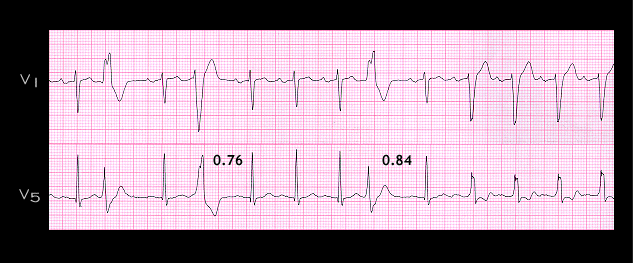
[IF POSSIBLE, INSERT THE COUPLING INTERVALS OF THE VPBS (BELOW THEM and in red ) MENTIONED IN THE TEXT]
The aberrant conduction in the first of these last four wide complex beats can be attributed to the long compensatory pause (0.84 seconds) that follows the preceding ventricular premature beat. This pause is longer than that which follows the second ventricular premature beat (0.76 seconds) because the coupling interval of the third ventricular premature beat (0.36 seconds) is shorter than that of the second (0.23 sec).
As a result of this longer compensatory pause, the refractory period of the conducting system will be longer for the sinus beat that follows the third ventricular premature beat than for that which follows the second, and the conducting system still be partially refractory at the time of this sinus beat even though the sinus rate is the same as the sinus beats that were conducted with normal QRS complexes. These wide complex beats, like the wide complex beats shown on page 7.4.18, are examples of rate dependent bundle branch block.
